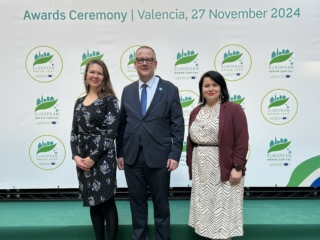Vaasa is the Climate Municipality 2025!
22.5.2025
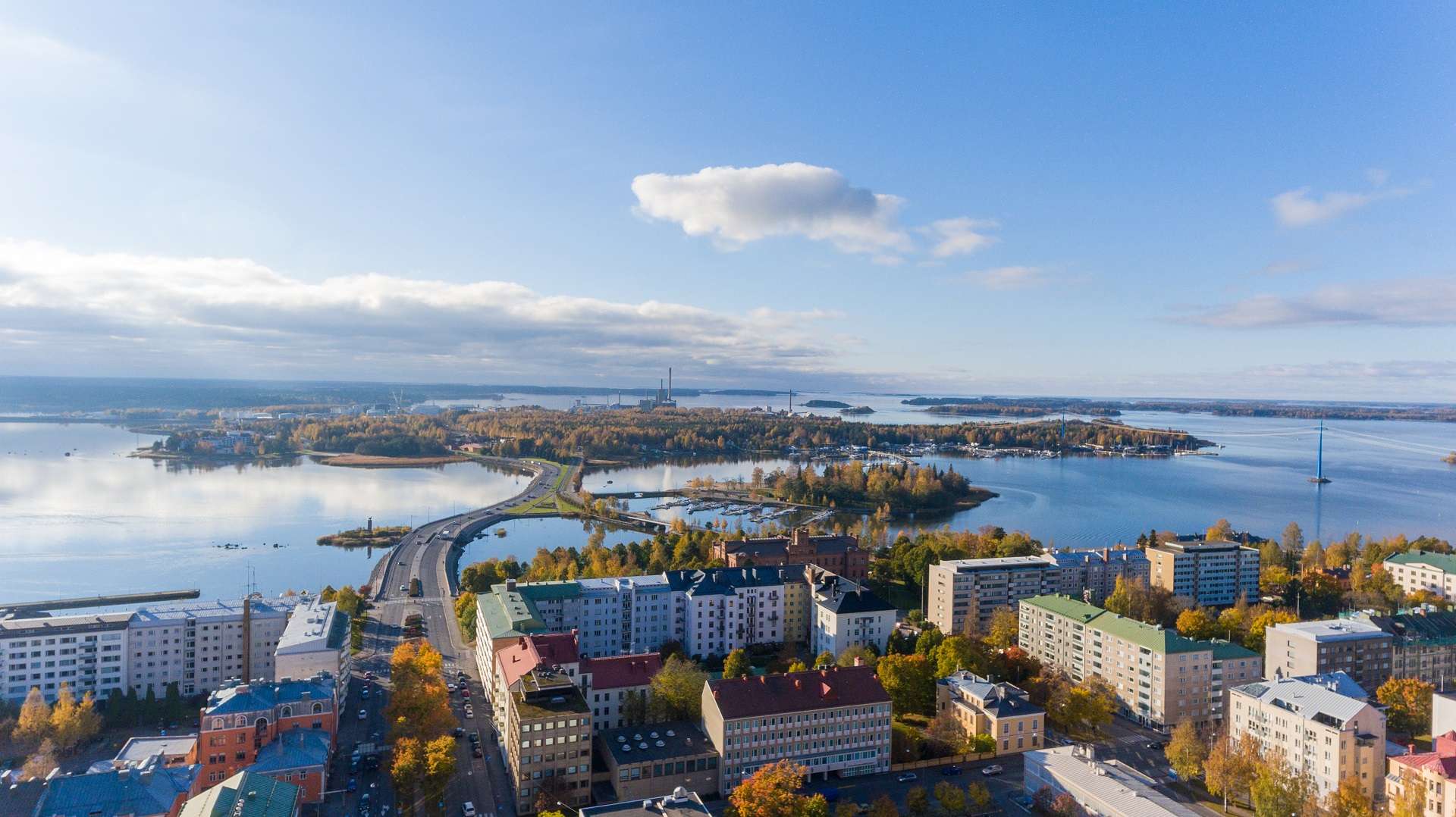
The strategic goal of the City of Vaasa is to achieve carbon neutrality by the year 202X. Carbon neutrality means significantly reducing greenhouse gas emissions in the urban area and offsetting the remaining emissions.
Mitigating the effects of climate change and adapting to the inevitable climate change will require a significant change in operating culture. The actions taken by the city alone are not enough. In addition, the actions and choices of local residents, businesses and communities are crucial to achieving this goal.
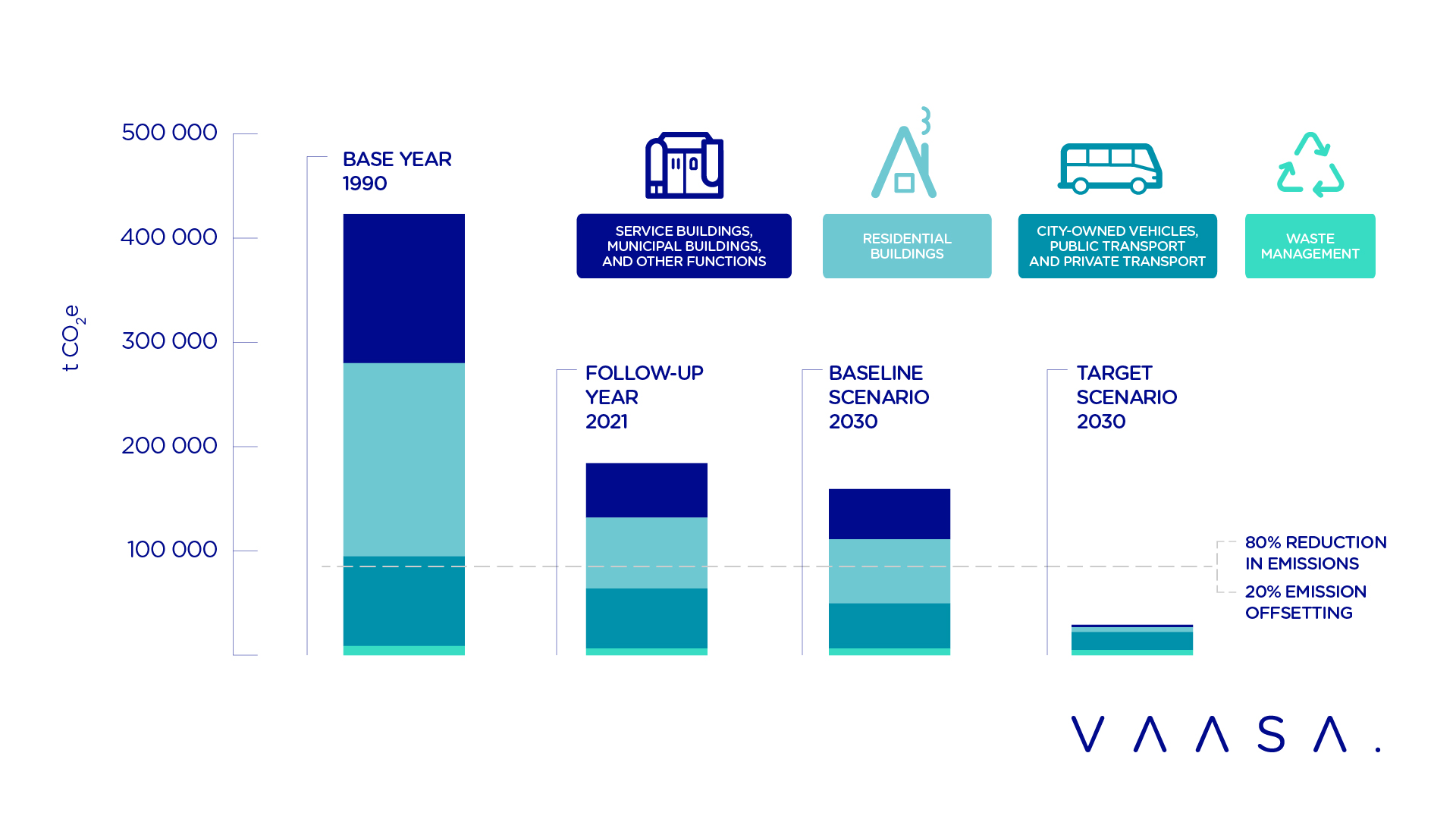
Without enhanced climate action, emissions in the City of Vaasa will decrease, but not quickly enough in the global context. In addition to cross-sectoral cooperation and sustainable consumption patterns, action is needed to reduce emissions, in particular from housing, buildings and construction, traffic, transport and waste management.
The city’s carbon neutrality target ‘Carbon Neutral Vaasa 202X’, is one of the most ambitious in Finland. Vaasa’s climate efforts are strongly guided by the city’s 2022–2025 strategy, which highlights achieving carbon neutrality as a key theme. The Ostrobothnia Climate Strategy 2040 also guides and supports Vaasa’s ambitious climate efforts.
The City of Vaasa aims to achieve carbon neutrality by the end of the 2020s, ensuring that emissions do not exceed the amount sequestered by carbon sinks. The city has also explored the potential of forest carbon sequestration in the coming years. The goal is to make Vaasa the most energy-efficient and energy-conscious city in Finland, engaging both residents and city employees in climate efforts through various incentives and modes of low-carbon transportation, for example.
Vaasa’s most important measures to reduce greenhouse gas emissions include phasing out fossil fuels, improving energy efficiency and introducing sustainable energy solutions in various sectors. Improving energy efficiency, increasing the use of renewable energy and promoting climate-friendly building materials such as wood and circular economy products can help reduce emissions in the construction sector. Transport emissions are reduced through the continuing development of cycling and public transport.
Vaasa’s greenhouse gas emissions are projected to decrease by approximately 93% from 1990 levels by 2030, provided the climate actions outlined in the city’s Sustainable Energy and Climate Action Plan (SECAP) are fully implemented.
With climate change, living conditions are changing – temperatures and sea levels are rising, and rainfall is increasing. At the same time, climate change is impacting ecosystems and urban conditions by intensifying heat pockets and challenging stormwater management, among other effects. The city plays a crucial role in both mitigating and adapting to climate change. It is important to consider the potential impacts of climate change in the city’s decision-making, planning, and construction management.
The City of Vaasa has identified the most significant climate risks in its Sustainable Energy and Climate Action Plan. According to the study, the climate in Vaasa has warmed by 0.7°C between 1981–2010 and 1991–2020.
Monitoring and reporting are not just administrative measures; they are key tools for cities to take effective, transparent and responsible climate action. Monitoring enables continuous improvement and ensures that climate action has a real impact on the well-being and economy of the city and its residents.
It helps to assess how effective the city’s climate actions are and enables the identification and timely correction of failed or ineffective measures to save resources. Additionally, monitoring improves transparency for residents and businesses and enables the tracking and comparison of environmental impacts with other towns and cities. Monitoring can also ensure that the actions taken are fair to different groups, especially in the case of adaptation measures.
Achieving the carbon neutrality goal will require the efforts of everyone, from the city to its residents and local businesses.
Article categories: News

22.5.2025
Article categories: News

Article categories: EnergyVaasa News
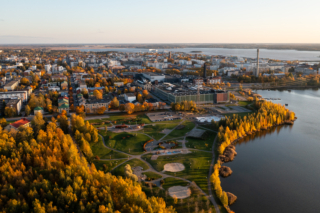
Article categories: News
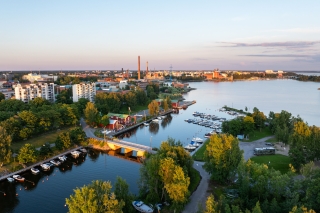
Article categories: News

Article categories: News

Article categories: News
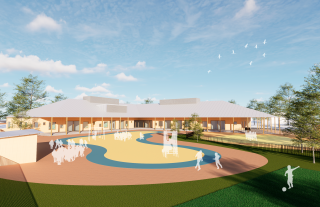
Article categories: News

Article categories: Archive News
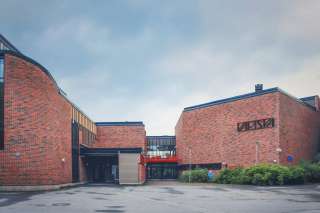
Article categories: Archive News
